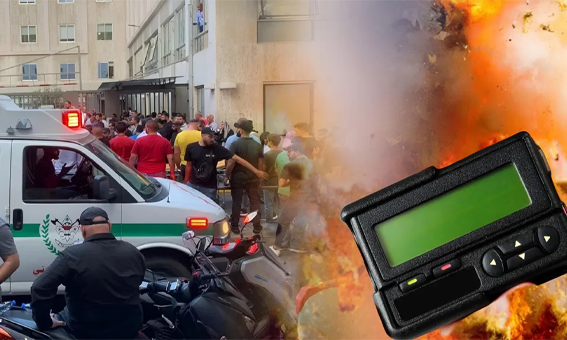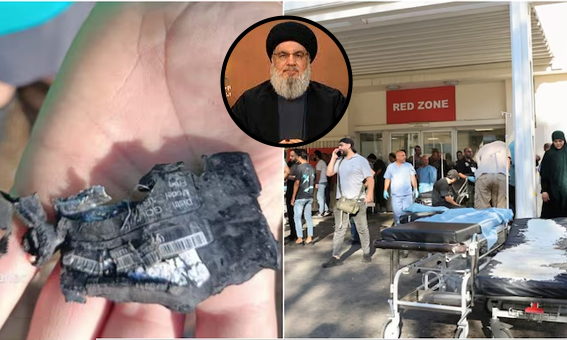How Did Israel Make Hezbollah Pagers Explode? Localized blasts across Lebanon signal a new phase in the long-standing conflict between Israel and Hezbollah. These targeted explosions, reportedly linked to advanced tech warfare, mark a pivotal moment in one of the region’s most enduring struggles.
How Israel Made Hezbollah Pagers Explode
Pagers, once the go-to communication device before mobile phones, have seen a resurgence in niche, high-security environments like Hezbollah. These small, radio wave-reliant devices are often considered more secure than modern smartphones because they operate through radio frequencies rather than internet connections, making them harder to track. Hezbollah’s use of these devices highlights their importance in maintaining mobility and security within the group.

The Incident: Explosions Across Lebanon
On the afternoon of 17 September, a series of coordinated explosions shook Lebanon, starting around 4:45 pm and lasting for about an hour. These blasts were devastating, leading to multiple casualties, including children and members of Hezbollah. One confirmed death was Mohammad Mahdi Ammar, the son of Hezbollah MP Ali Ammar. Additionally, Hezbollah reported the loss of two of its fighters, while the Lebanese Health Minister revealed that over 2,750 people were injured, with more than 200 critically wounded. Iran’s ambassador to Lebanon, Mojtaba Amani, was also among those injured.
Who is Responsible?
All fingers point to Israel as the primary culprit behind the explosions, though the country has yet to confirm or deny involvement. The conflict between Israel and Hezbollah has escalated since early October, with tensions growing along the Lebanon-Israel border. Israeli officials have recently hinted at military action aimed at pushing Hezbollah forces away from the border, potentially to facilitate the return of around 60,000 Israelis evacuated since the beginning of the conflict. Hezbollah, in a statement, accused Israel of this “criminal aggression” and vowed retaliation.
Why Target Pagers?
Pagers play a significant role in Hezbollah’s communications. Their reliance on radio waves instead of the internet means they operate on a unique frequency for each device, allowing for secure and relatively unmonitored communication. Unlike Hamas, which boasts advanced cyber capabilities and encrypted communication networks, Hezbollah’s use of more basic technology might have made it vulnerable.

Speculation suggests that Israel may have hacked the radio network that pagers rely on, sending a signal to trigger doctored pagers. This would align with reports from data analyst Ralph Baydoun, who theorized that pagers could have been tampered with at the manufacturing level, allowing for a targeted detonation. Israel could then use satellite data to track the operatives affected by the blasts, gaining valuable intelligence on Hezbollah’s operations.
The Science Behind the Explosions
But how could a pager explode? One possibility is thermal runaway—a process triggered when the lithium battery inside the pager overheats. The overheating could start a chemical chain reaction, eventually causing the battery to explode. While the exact method remains unclear, experts suggest the triggering event could be embedded within the device through a bug or doctored code, allowing Israel to initiate the explosion remotely.
A New Era of Warfare?
The ability to cause localized explosions via pagers marks a new phase in the tech warfare between Israel and Hezbollah. As conflicts in the region evolve, using advanced technology in combat scenarios is becoming increasingly common. While the method used to trigger these explosions is unclear, it represents a significant leap in how technology can be weaponized to target communication devices in high-security environments.
This event highlights the ever-evolving nature of conflict in the Middle East, where technology plays a crucial role in both defense and aggression.




